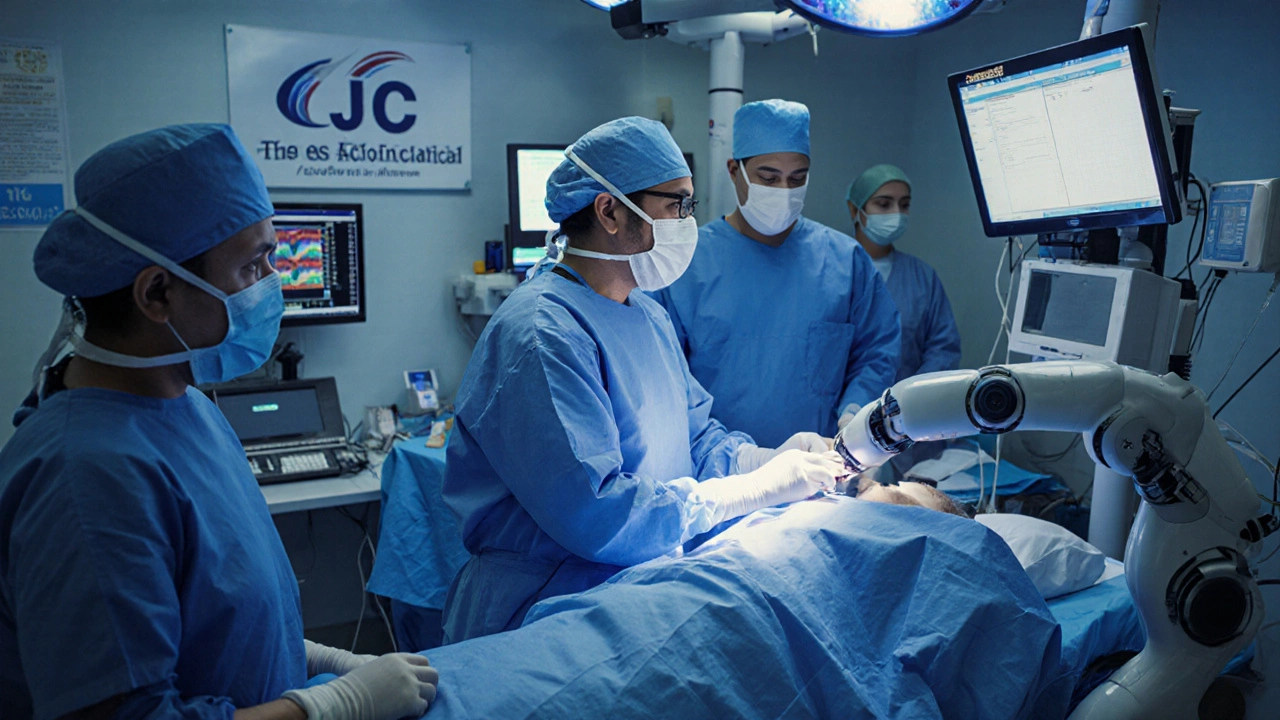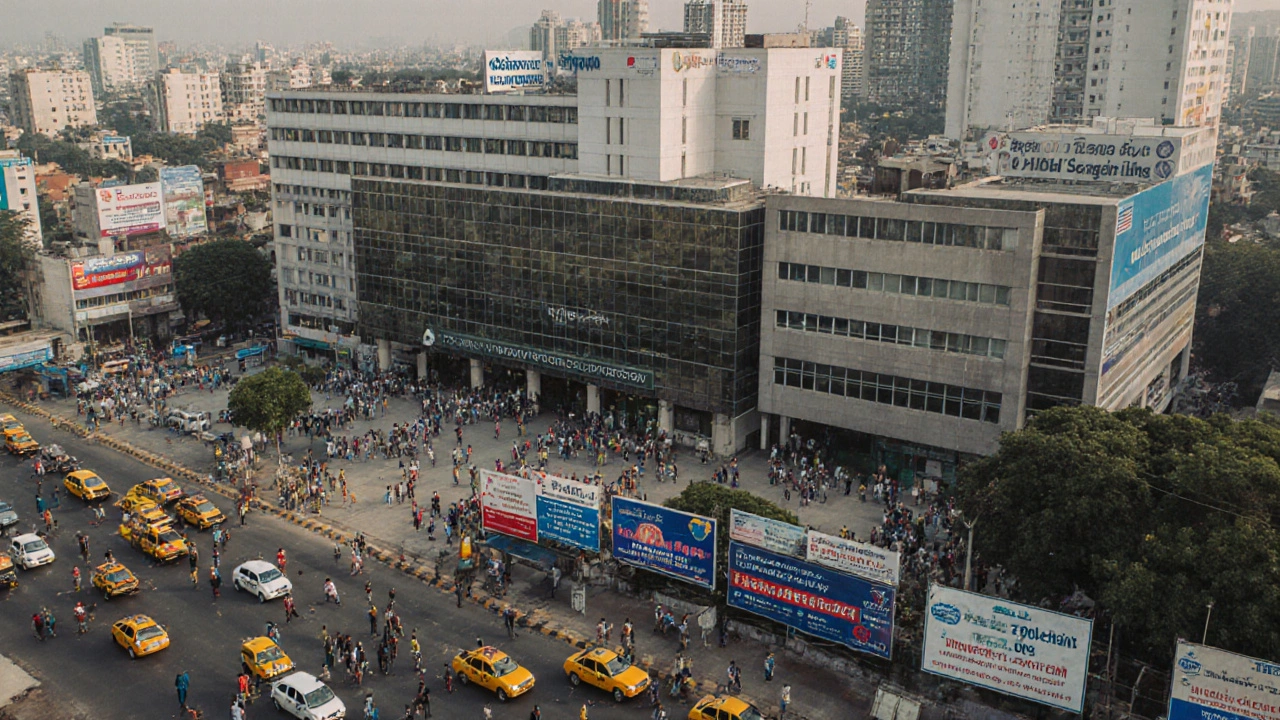Where Is the Best Country to Get Surgery? Top Destinations for Medical Tourism in 2025
 Nov, 16 2025
Nov, 16 2025
Medical Tourism Cost Calculator
Estimate Your Savings
Calculate potential savings for your medical procedure by comparing prices across top destinations.
Calculate to see potential savings
Select your procedure and country to compare costs across top destinations
Getting surgery abroad isn’t just for people who can’t afford care at home-it’s becoming the smart choice for millions who want faster access, lower costs, and high-quality outcomes. In 2025, over 2 million people traveled internationally for medical procedures, and the numbers keep rising. But where’s the real best place to get surgery? It depends on what you need, how much you’re willing to spend, and what kind of results you expect. There’s no single winner, but some countries consistently outperform others across key metrics like safety, cost, recovery time, and aftercare.
Thailand: The Leader in Cosmetic and Orthopedic Surgery
Thailand has held the top spot in medical tourism for over a decade, and for good reason. Bangkok and Phuket are packed with JCI-accredited hospitals that treat international patients daily. If you’re looking for cosmetic surgery-like rhinoplasty, breast augmentation, or tummy tucks-Thailand offers prices that are 60-80% lower than in the U.S. or UK. A full tummy tuck in Birmingham might cost £7,500; in Bangkok, it’s around £2,200, including accommodation and follow-up care.
Orthopedic patients also flock here. Hip and knee replacements are performed with the same precision as in Germany or Japan, but at a fraction of the price. Hospitals like Bumrungrad and Bangkok Hospital have English-speaking staff, modern equipment, and recovery programs designed for travelers. Many patients combine surgery with a week-long stay at a beach resort, turning medical care into a restorative experience.
Mexico: The Closest and Most Affordable Option for North Americans
If you live in the U.S. or Canada, Mexico is often the easiest and fastest choice. Border cities like Tijuana, Ciudad Juárez, and Monterrey have specialized medical zones catering to foreign patients. Heart bypass surgery that costs $150,000 in the U.S. can be done in Mexico for under $30,000. Even complex procedures like spinal fusions or bariatric surgery are available at 70% off.
What makes Mexico stand out is proximity. You can fly from Dallas or Chicago and be in the hospital the same day. Recovery stays are often in clean, hotel-style facilities with bilingual nurses. Many U.S. doctors even refer patients here because they know the standards are high. A 2024 study from the American College of Surgeons found that complication rates in top Mexican hospitals were on par with those in U.S. community hospitals.
India: High-Tech Care at a Fraction of the Cost
India is where advanced medicine meets affordability. Cities like Delhi, Mumbai, and Chennai are home to world-class hospitals like Apollo, Fortis, and Medanta. These institutions have robotic surgical systems, MRI-guided procedures, and surgeons trained in the U.S. and U.K. But the real draw? A heart valve replacement that costs $120,000 in the U.S. runs about $10,000 in India-including flights, visa, and a 10-day recovery stay.
India is especially strong in cardiac, neurosurgery, and organ transplants. Liver transplants here cost under $40,000-less than half the price in Germany. What’s surprising is how well post-op care is handled. Patients get daily check-ins from a dedicated care coordinator, and many hospitals offer telemedicine follow-ups for months after returning home.

Poland: Europe’s Best-Kept Secret for Orthopedics and Dentistry
Most people don’t think of Eastern Europe when it comes to surgery-but Poland is changing that. Warsaw and Kraków have modern private clinics that are JCI-certified and staffed by doctors who trained in London or Zurich. Dental implants, which cost $4,000 in the U.S., are around $800 in Poland. Hip replacements? About $8,500 instead of $35,000.
Poland is ideal for Europeans who want to avoid long NHS wait times. A patient from the U.K. can fly to Warsaw on a Friday, have surgery on Monday, and be back home by Friday with minimal disruption. The country also has strict regulations on medical devices and sterilization, making it one of the safest options in Europe for non-emergency procedures.
South Korea: Precision in Aesthetic and Cancer Surgery
South Korea leads the world in cosmetic surgery volume-over 1 million procedures a year. But it’s not just about looks. Seoul’s hospitals are pioneers in minimally invasive cancer surgeries and reconstructive techniques after trauma or disease. If you need eyelid surgery, facial contouring, or breast reconstruction, South Korea has unmatched expertise.
Costs are still lower than in the U.S. A full facial lift costs about $8,000 in Seoul versus $15,000 in Los Angeles. What sets South Korea apart is the technology: AI-assisted imaging, 3D surgical planning, and ultra-precise robotic tools are standard. Recovery is fast, and clinics often provide translators, airport pickup, and even cultural guides to help you adjust.
What to Watch Out For
Not every country or clinic is safe. Some places advertise low prices but cut corners on sterilization, surgeon qualifications, or aftercare. Always check if the hospital is accredited by the Joint Commission International (JCI). Avoid clinics that don’t list surgeon credentials or refuse to share before-and-after photos.
Also, consider insurance. Most travel insurance won’t cover elective surgery abroad, but some medical tourism agencies offer bundled packages with complication coverage. Make sure you know what’s included: return flights? Emergency transport? Follow-up scans? Don’t assume anything.
Language matters too. Even if the hospital claims to have English speakers, ask to speak with your surgeon directly before booking. Miscommunication can lead to mistakes. And never rush the decision-take time to compare at least three clinics.

How to Choose the Right Country for Your Surgery
There’s no one-size-fits-all answer. Here’s how to decide:
- What procedure do you need? Cosmetic? Orthopedic? Cardiac? Each country has specialties.
- How far are you willing to travel? Mexico is convenient for North Americans; Poland for Europeans.
- What’s your budget? India and Thailand offer the deepest discounts; South Korea and Poland are mid-range but high-quality.
- Do you need follow-up care? Some countries offer remote monitoring; others expect you to return for check-ups.
- Are you comfortable with cultural differences? Food, language, and recovery routines vary widely.
For example: If you’re from the U.S. and need a knee replacement, Mexico is practical. If you’re from the U.K. and want dental implants, Poland is ideal. If you’re looking for complex cancer surgery with cutting-edge tech, India or South Korea are top picks.
Real Stories, Real Results
One patient from Manchester had a double hip replacement in India. He paid £9,200 total, including flights and a two-week recovery stay. Two years later, he’s hiking in the Lake District. Another woman from Toronto had a full facial reconstruction after a car accident in Thailand. Her surgery cost $28,000-less than a third of what U.S. hospitals quoted. She now runs a small business and no longer avoids photos.
These aren’t outliers. They’re typical outcomes from well-researched decisions. The key isn’t just saving money-it’s finding the right balance of quality, safety, and support.
Final Thoughts
The best country to get surgery isn’t the cheapest. It’s the one that matches your needs, your body, and your life. Whether you’re flying to Bangkok for a new smile, to Warsaw for a hip replacement, or to Delhi for a heart procedure, the world is open for medical care that’s affordable, safe, and effective. Do your homework. Ask questions. Verify credentials. And don’t let fear stop you from making a smart, informed choice.
Is it safe to get surgery in another country?
Yes, if you choose accredited hospitals in countries with strong medical standards. Look for JCI certification, check surgeon credentials, and read patient reviews. Countries like Thailand, India, Poland, and Mexico have hospitals that meet or exceed Western safety standards. Complication rates in top facilities are often lower than in underfunded public hospitals back home.
How much can I save by having surgery abroad?
Savings vary by procedure and country, but most people save 50-80%. For example: a knee replacement in the U.S. costs $50,000; in India, it’s $8,000. A rhinoplasty in the UK is £5,000; in Thailand, it’s £1,800. These prices usually include accommodation, transfers, and post-op care-something you rarely get at home.
What if something goes wrong after I return home?
Reputable medical tourism agencies offer complication coverage as part of their packages. Many hospitals also provide free telemedicine follow-ups for up to a year. Make sure your package includes emergency support and clear instructions for local doctors. Always keep your full medical records and send them to your home doctor.
Do I need a visa to get surgery abroad?
Most countries offer medical visas or easy tourist visa extensions for patients. Thailand, India, and Mexico have streamlined processes for medical travelers. Hospitals often help with visa paperwork, including letters of invitation. Check with your chosen clinic-they’ll guide you through the steps.
Can I use my health insurance for surgery abroad?
Most standard health plans don’t cover elective surgery overseas. But some private insurers offer international coverage or reimbursement for approved procedures. Always check with your provider before booking. Medical tourism packages often include optional insurance that covers complications, which is a smart addition.